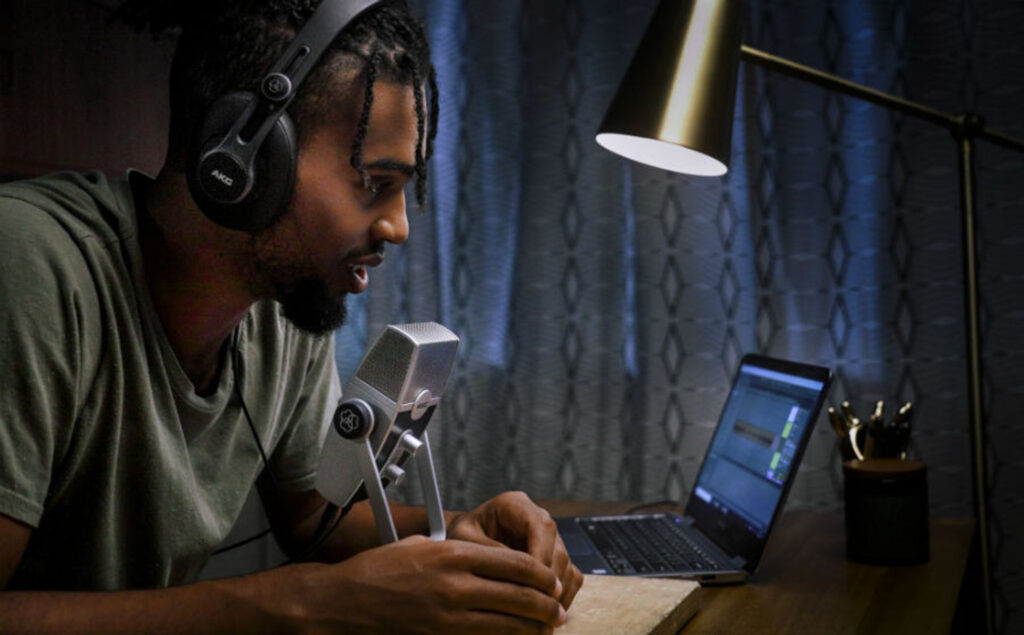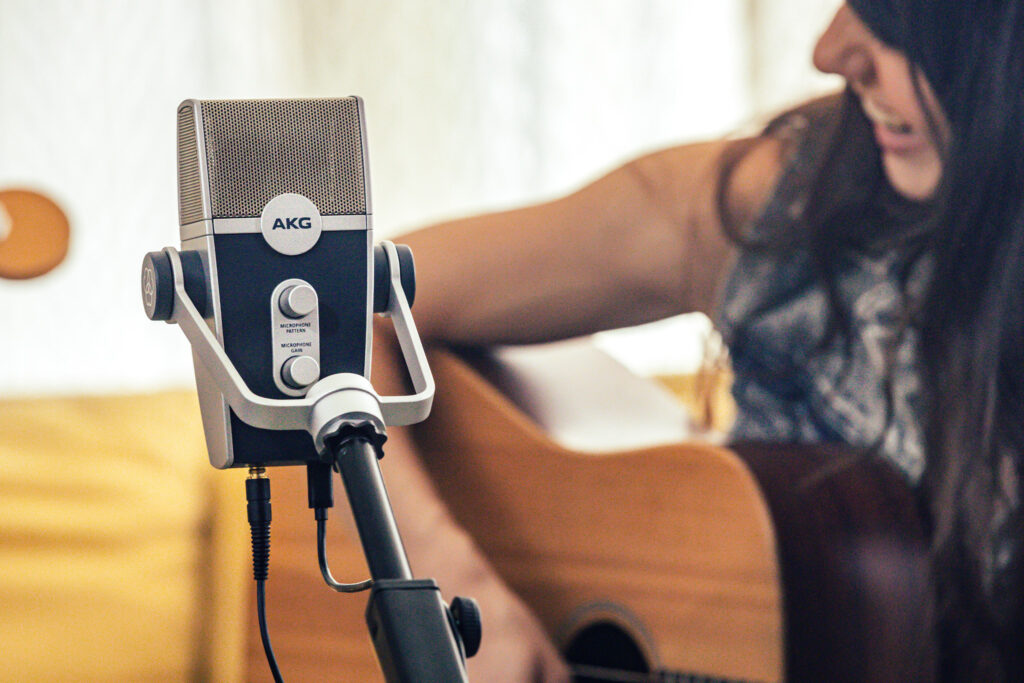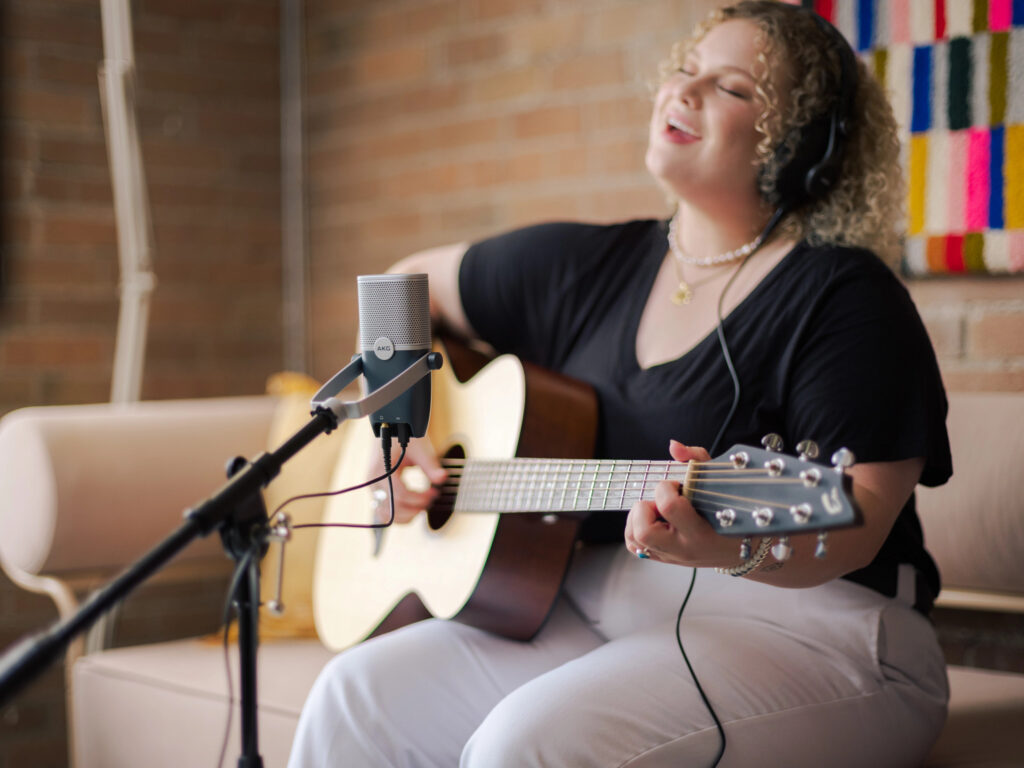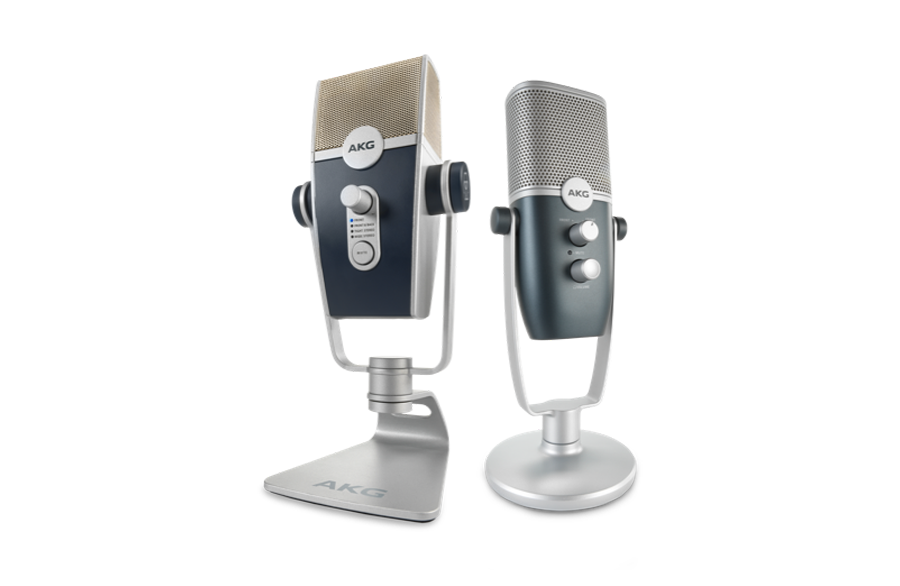In my neverending quest to find the perfect microphone for web conferencing, YouTube, and some minor music recording projects, I stumbled across a pair of offerings from AKG — the Ara and the Lyra.
Now, let’s dig into these two microphones.
They look as good as they sound
Regardless of how good your channel or podcast is, a sexy microphone makes it look like you know what you’re doing.
Both the Ara and Lyra are especially attractive. The Ara is among the best looking of the $100-range I’ve come across. The Lyra, on the other hand, is definitely the best looking in its range — to me, at least.
But it takes more than looks, and these two mics have a lot more than that.


AKG Ara and Lyra USB mics cover all the bases
If you’re doing podcasts, YouTube videos, voiceovers, or other similar types of content, the AKG Ara (MSRP $99) is a great entry-level microphone. It could easily become your workhorse microphone.
For my first test drive with the Ara, I recorded a scripted voiceover and added a music bed. The Ara simply blew me away in terms of how well I sounded on the recording — far better than I expected.
I love the sound of my voice in the “Front” microphone pattern setting. In that setting, I really felt like I was channeling my inner Wolfman Jack.
And it also does a good job of keeping small surrounding noises (mouth pops, and such) at bay.
The Ara is an excellent microphone if you want to achieve the rich sound of an old-time radio disc jockey. And you won’t have to spend $450 on an Electro-Voice RE20.
The AKG Lyra (MSRP $149) is an upgrade from the Ara.
It has two additional stereo microphone patterns, which allow more flexibility while choosing how to capture audio content. For instance, if a podcaster was dabbling in immersive podcasting, then the Lyra would provide more ways to capture room ambience.
I also performed a separate recording of a generic scripted voiceover with the Lyra, and I thought the recording sounded clean. Again, in the “Front” microphone pattern setting, but the tone was slightly different than that of the Ara.
The Lyra definitely brings a more sensitive microphone to the table, as well. It can pick you up with very good clarity from quite a distance. The gain knob physically located on the back of the microphone is a super handy feature. It allows you to really dial in the sound you want.
For me, that sound is right at the edge of breakup. That was my favorite setting for getting plenty of power and depth, without sacrificing too much clarity or creating unwanted distortion.
The Ara and Lyra are two different microphones with different designs. But I’m certain they’re equally useful for podcast and content creation types of projects.
All you need is a microphone, software and some talent
The good news is, both the Ara and Lyra microphones double as an audio interface, and they’re all you need to connect to the computer.
And there’s software included with both microphones. They come packaged with Ableton Live Lite, one of the most popular digital audio workstations today. The light version has some limits, but short of recording full professional music, this is all you need to get rolling.
Great microphones for singer-songwriters and musicians
Legions of aspiring singer-songwriters, artists, and bands are now recording in bedrooms, living rooms, bathrooms, and home studios. Some pretty astonishing results can be achieved with just the AKG Lyra sitting on a table or microphone stand, right in front of the musicians and vocalists.

From intimate acoustic guitar and vocal sessions to band rehearsal recording, the Lyra has a lot of options for capturing sound. It’s well designed for many different types of recording scenarios.
The AKG Lyra’s ability to switch between four different microphone patterns creates a high level of versatility when recording different types of audio sources.
This means that you can change the way the microphone picks up the source or sources, so that you can have more control over what you’re recording.
For instance, I sat in front of the Lyra with an acoustic guitar, and I sang. I had the microphone pattern knob set to the “Front” pattern. It picked up everything I was playing directly in front of the microphone.
Another possibility would be to record a vocalist and acoustic guitarist sitting across from each other in a songwriting session. They might rotate the knob to the “Front & Back” position for that situation.
The microphone patterns also include “Tight Stereo,” and “Wide Stereo.”
There really is no set rule. The best thing to do is just experiment with the different microphone patterns. You can try recording a short excerpt for each microphone pattern. And then play them back one at a time, to see which recorded version sounds best for the instruments and voice sources that you’ve recorded.
Once you’ve landed on your preferred version, then that’s the microphone pattern that you should consider using.
As a side note, the Ara doesn’t include a gain knob on the microphone body itself. However, you can still easily control the gain with the click of a mouse in the computer audio settings.
I also tried the AKG Ara, with the same acoustic guitar and vocal that I recorded for the Lyra test. And I had the Ara’s microphone pattern knob rotated to its “Front” setting, as I did with the Lyra.

To me, between the Ara and Lyra, in the same relative “Front” setting, the recording quality seemed equal. Each microphone had its own nuances that I could hear.
However, I did feel like the Ara had some nice coloration that brought out my voice nicely. Using Apple’s Logic Pro X digital audio workstation, I also tried recording the acoustic guitar first, and then my vocal on another track. The Ara sounded great on my individual acoustic guitar and vocal tracks. It really enhanced my voice. It has a tone that resembles the warm sound of a tube microphone.
The AKG Ara microphone shines in web conferencing, too
I’ve been doing some Zoom meetings with the Ara connected to my computer, and the microphone is also a stellar performer in this arena.
I’ve found that for web conferencing, I prefer the knob to be set to “Front & Back” position. Simply because, to my ears it’s a straightforward clean sound. This is in contrast to the warm voice sound that you may notice in the “Front” setting.
That said, opinions are subjective, and I would recommend experimenting with both settings. It’s possible your collaborators would prefer one setting over another.
Try the Ara microphone with your iPhone, or a DSLR for vlogging
I thought I’d try the Ara with my iPhone to make Zoom calls.
I plugged the USB Type-A end of the Ara’s USB cable into my Apple Lightning to USB Camera Adapter. Then I plugged the Lightning end of the adapter into the iPhone. Simple as that.
I was immediately up and running in a Zoom call with one of my colleagues.
My colleague said my voice sounded noticeably better, as compared to the built-in microphone on my iPhone.
And yet another option for the Ara includes the ability to connect it to a DSLR camera for creating vlog content.

In summary
The AKG Ara is a great microphone for anyone looking to improve their content and collaboration setups.
The Ara also makes sense if you need a good degree of portability for interviews, music sessions, and general field recording.
The AKG Lyra is a bump up from the Ara, and allows more options for recording sources. It has more controls on both sides of the microphone, and offers the extra benefit of the microphone gain control knob. The Lyra has a very attractive old-school look to it.
As compared to the Ara, the Lyra has several additional features that make it a good step up, if you can swing it.
But if you can’t, the Ara should more than do the job.
I consider both of these microphones chameleons, since they can adapt to many different recording situations.
Both mics will capture sound similar to the way you’d come to expect from AKG’s vaunted mid-tier studio microphones.
And finally, both the Ara and Lyra embellish the desktop setting for anyone considering the importance of their visual presentation and persona on camera. It’s definitely a conversation kick starter.
For more information and full specs on the new AKG Ara, and the AKG Lyra, please visit www.akg.com.











